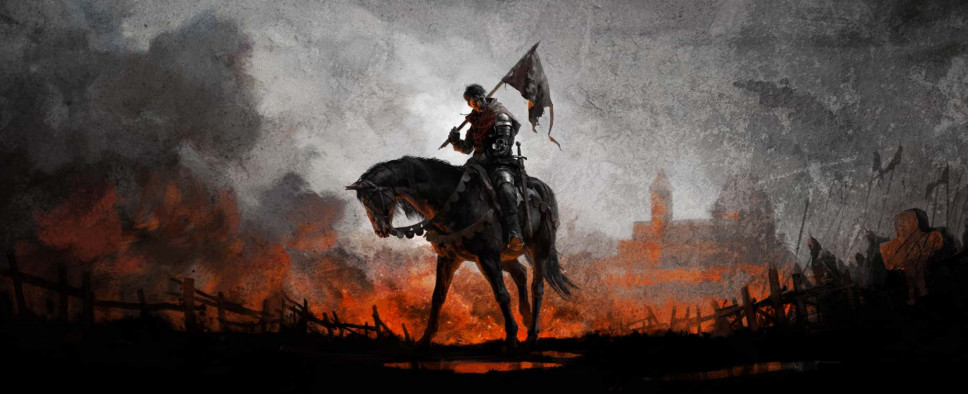Kingdom Come: Deliverance Review - Page 2
-
Category: ReviewsHits: 15905

Article Index
And now, let’s move on to perhaps the biggest system of them all. Combat. But first, let’s note that the game allows you to avoid most of it. I think there’s one enemy you have to kill, but the rest you can avoid, knock out by using stealth, or talk out of fighting you altogether.
KCD’s melee combat is based around HEMA, which stands for Historical European Martial Arts. The idea was to create a system as close to our current understanding of medieval fighting as possible. Since I’m not an expert in that particular filed, I can’t say with any authority how successful that undertaking was. But I have to admit that most of the game’s combat animations look mighty impressive. At the same time, the moments between those animations, when combatants spin their weapons around while getting ready to strike, can look quite clunky.
Overall though, I found the game’s directional combat system augmented with kicks, blocks, parries, and combos to be quite enjoyable. It’s tough and unforgiving, but even if it may not seem that way initially, you have only yourself to blame for failing. Plus, it’s very satisfying to get better at it and see your character go from an inept village lad who can’t swing a stick right to a hardened veteran carving his way through the battlefield like some Slavic Conan.
But even when you get good at fighting and dress yourself in enough layers of armor to shrug off dozens of blows, fighting multiple opponents can be quite deadly. Add to that a slightly different fist fighting system and an archery system that’s anything but easy, and you have plenty to master.
One somewhat disappointing thing about KCD’s combat is the lacking weapon and enemy variety. The game essentially has three main weapon types (swords, axes, maces), and throughout the game you’ll be fighting guys wielding these weapons, and occasionally their dogs. Now, had this been a game based on folklore instead of actual history, we could get a much more varied bestiary with manticores, dragons, and whatnot. But then again, animating all that stuff, as well as additional weapon types, would probably cost a fortune, so I can understand this particular limitation.
My other big issue with the combat can’t be waved away in a similar fashion. You see, I feel that KCD is at its best when you’re barely scraping by. But after you play for a bit, you’ll realize that there are just too many easy ways to become overpowered. Not really sure how this could have been avoided in a game where defeated foes drop all their gear, but still, it’s something worth noting.
All of the above is fueled by a “learn by doing” role-playing system. Your character has a set of stats, combat skills and social skills that improve over time as you participate in various activities. Level and attributes represent your character’s overall proficiency as a human being - how strong, nimble, or sociable he is. Combat skills govern his proficiency with various weapons and combat techniques. And social skills consist of a great deal of miscellaneous skills one might need in a medieval world, including such fairly unique ones like reading and drinking alcohol.
Usually I’m not a huge fan of learn by doing systems, but KCD managed to win me over with its perks that you get upon reaching certain skill levels. With a few exceptions none of them offer boring percentage-based increases, and those that do, give you something really good, like extra carrying capacity or a chance to instantly knock your opponent out if you hit him on the head. And as a general rule KCD’s perks either give you new ways to interact with the game or allow you to better define your character.
Story and Presentation
The game is set in medieval Bohemia circa 1403. During that time the land the would go on to become the modern Czech Republic was going through a bit of unrest following the death of Holy Roman Emperor Charles IV. And while his successors were butting heads to figure out who would come out on top, ordinary everyday life went on.
The game’s developers didn’t want to tell some epic story of massive battles and high society. Instead, they wanted to show us a slice of ordinary medieval life that gets turned upside down by the powers that be. As such, you play as Henry - a seemingly ordinary blacksmith’s son. When his quiet village gets raided, his family gets killed and the sword his father was forging for the local lord gets stolen, he sets out on a personal journey of revenge using said sword as a catalyst.
The development team was headed by one Daniel Vavra, who you may know as the mastermind behind the Mafia series. And seeing how he was able to believably portray American mobsters on multiple occasions, a story that’s essentially set in his backyard should be a piece of cake for him, right? Right!
Not only do you meet numerous fictionalized versions of actual historical figures in the game, but you also get a vast in-game Codex that teaches you a lot about how the world worked back in the day, the major powers, and whatnot.
The Codex, as well as all of the game’s menus and its highly detailed map, are all presented in a way reminiscent of medieval paintings, which greatly enhances the overall atmosphere and helps frame the game’s story.

